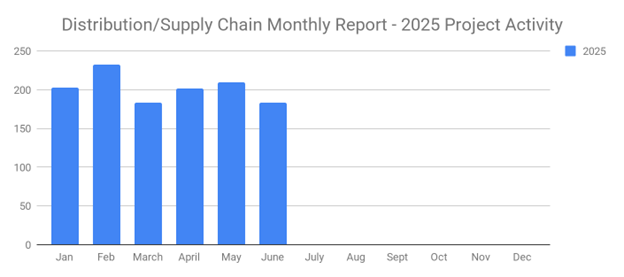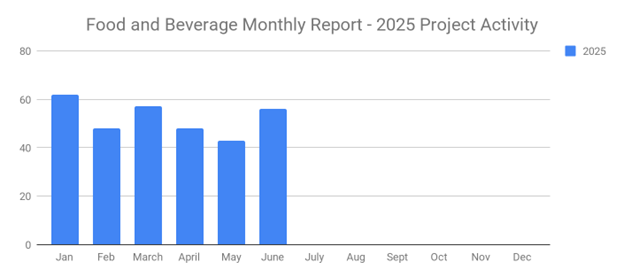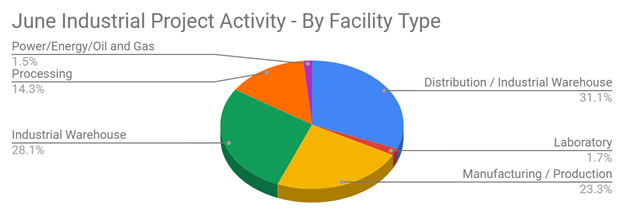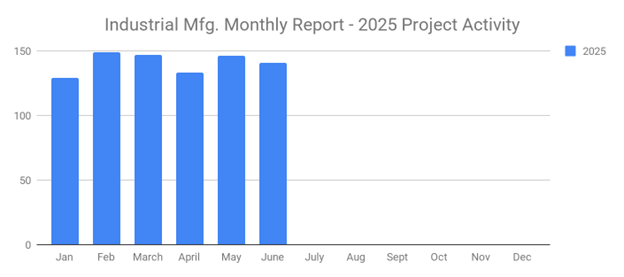
Sales prospecting and industrial lead generation are foundational strategies for manufacturers and industrial companies aiming to build robust sales pipelines and drive revenue. These tactics are especially critical for businesses in the manufacturing space, where targeting facility managers, engineers, and procurement specialists requires precision and expertise.
While sales prospecting and lead generation share similarities, they serve distinct purposes. By understanding their differences and leveraging their unique strengths, industrial businesses can optimize their sales efforts to secure more high-quality clients.
What Is Industrial Sales Prospecting?
Industrial sales prospecting is a targeted sales strategy that involves identifying, engaging, and nurturing prospective buyers in the manufacturing and industrial sectors. This process typically follows lead generation and focuses on building personalized connections that move prospects through the sales funnel.
Key Characteristics of Industrial Sales Prospecting:
-
Targeted Outreach: Focus on key decision-makers, such as plant managers, procurement teams, and engineers.
-
Personalized Messaging: Tailor communications to address the specific challenges and needs of industrial buyers, such as reducing downtime or improving operational efficiency.
-
Channel Diversity: Utilize LinkedIn, email, phone calls, and in-person visits to connect with prospects.
For example, an industrial equipment manufacturer might prospect a company planning a facility expansion, highlighting how their machinery can improve production efficiency. Personalizing the outreach to include relevant details about the expansion demonstrates expertise and builds trust.
What Is Industrial Lead Generation?
Industrial lead generation involves acquiring contact information from prospective buyers who have expressed interest in your manufacturing or industrial services. This process lays the groundwork for sales prospecting by creating a database of qualified leads.
Key Characteristics of Industrial Lead Generation:
-
Data Collection: Gather names, emails, phone numbers, and job titles of decision-makers in the industrial space.
-
Inbound Tactics: Use whitepapers, case studies, and webinars focused on industrial topics to attract leads.
-
Outbound Tactics: Conduct LinkedIn campaigns targeting facility managers or engineers, offering resources like efficiency guides or maintenance checklists.
For example, a manufacturing company might create a downloadable guide on “Optimizing Plant Operations” and collect contact details from engineers and operations managers who access it. These leads can then be prioritized for prospecting.
Lead generation processes can be defined as either inbound or outbound. Inbound lead generation processes are characterized by their indirect nature. They don't actively seek out prospective buyers. Rather, they pique the interest of prospective buyers so that they willing to contact you or your moving company and give their contact information. Outbound lead generation processes are more direct. They focus around Blog Article contacting prospective buyers to acquire their contact information.
Understanding the distinctions between these two tactics is crucial for crafting an effective sales strategy:
How They Differ:
-
Objective: Lead generation focuses on gathering contact details; prospecting aims to convert those leads into customers.
-
Timing: Lead generation occurs earlier in the sales cycle, while prospecting involves direct engagement.
-
Approach: Lead generation uses broader, indirect methods like content marketing, whereas prospecting is a more focused, direct outreach strategy.
By aligning these strategies, moving companies can create a seamless sales process that ensures a steady pipeline of qualified leads and maximizes conversions.
Industrial Lead Generation Tips
You'll need to use the right channels for a successful lead generation strategy. In the moving industry, few channels are as effective as LinkedIn. Research shows that roughly four in five of all B2B leads are generated on LinkedIn. Some B2B sales reps assume that Facebook is more effective because it reaches a larger audience. While Facebook may have more users, though, it fails to drive the same number of leads as LinkedIn. This is due to the fact that LinkedIn is designed specifically for business owners and professionals, whereas Facebook is designed for everyone. Therefore, you should use LinkedIn when generating leads for your moving company.
To enhance the effectiveness of your lead generation strategy:
-
Leverage LinkedIn: 80% of B2B leads are generated on LinkedIn, making it a crucial platform for targeting engineers, plant managers, and procurement teams.
-
Focus on Quality Over Quantity: Use tools like SalesLeads’ Project Reports to identify high-value leads actively involved in upcoming projects.
-
Publish Industry-Specific Content: Offer valuable resources, such as case studies or whitepapers, that resonate with your industrial audience.
Of course, you can use content marketing to generate sales leads as well. Content marketing is an inbound lead generation process. When you publish contact that's valuable to prospective buyers, they may contact your moving company to inquire about its products or services.
Keep in mind that the quality of your leads is more important than the quantity. You may generate hundreds or thousands of leads in a short period, but if they all have little or no interest in your moving company's products or services, they won't translate into sales. As a result, you should strive to generate high-quality leads for a successful sales strategy.
One way to get better quality sales leads is to use SalesLeads' Project Reports. The difference is easy. The Project Reports have been tracked and researched by our researchers, making these sales leads identified projects. We also provide the project contacts with full name, email, phone number and other pertinent information. In addition, you get a project description of what the company is looking to accomplish.
For superior results, consider using SalesLeads’ Project Reports. These reports provide detailed insights into active projects, including descriptions of the company’s needs and direct contact information for decision-makers. This data enables targeted outreach, ensuring your leads are already primed for engagement.
Industrial Sales Prospecting Tips
When performing sales prospecting, you should create personalized and relevant sales messages. Personalization involves tailoring a sales message to a specific buyer. Furthermore, personalization is easier than you may realize. You don't need to know a ton of information about prospective buyers to create a personalized message; all you need to know is their names. Personalizing a call or email with a prospective buyer's name will immediately strike a connection with him or her that increases the chance of moving the prospective buyer through your B2B company's sales funnel.
Effective sales prospecting requires a strategic and personalized approach:
-
Leverage LinkedIn: 80% of B2B leads are generated on LinkedIn, making it a crucial platform for targeting engineers, plant managers, and procurement teams.
-
Focus on Quality Over Quantity: Use tools like SalesLeads’ Project Reports to identify high-value leads actively involved in upcoming projects.
-
Publish Industry-Specific Content: Offer valuable resources, such as case studies or whitepapers, that resonate with your industrial audience.
For example, when reaching out to a company planning an office relocation, mention their upcoming move and outline specific ways your services can meet their needs. This level of personalization builds trust and demonstrates your understanding of their challenges.
Another sales prospecting tip is to contact prospective buyers immediately after acquiring them as a sales lead. The longer you wait to contact a prospective buyer, the lower your chances of securing him or her as a buyer. Time is of the essence when performing sales prospecting. You need to contact them as soon as possible. Otherwise, they may choose a competing company's product or service. If this occurs, you won't land them as a buyer.
Industrial Sales Prospecting Tips
-
Personalize Your Outreach: Reference specific project details or operational challenges in your communication.
-
Act Quickly: Respond to new leads within 24 hours to maximize engagement.
-
Use SalesLeads’ Project Reports: These reports provide in-depth insights into active industrial projects, enabling targeted and effective prospecting.
Integrating Industrial Lead Generation and Prospecting
The true power of these tactics lies in their integration. Lead generation creates the foundation by identifying potential buyers, while sales prospecting builds on this groundwork through personalized and direct engagement.
To achieve maximum results, industrial companies should integrate lead generation and prospecting into a cohesive strategy. By generating high-quality leads and engaging them with personalized outreach, manufacturers can ensure a steady pipeline of opportunities.
Best Practices:
-
Use Detailed Project Insights: Leverage tools like SalesLeads’ Project Reports for accurate and actionable data.
-
Segment Leads: Prioritize leads based on their readiness to buy and tailor communications accordingly.
-
Optimize Continuously: Regularly analyze metrics to refine your strategies.
By combining the strengths of lead generation and sales prospecting, moving companies can create a cohesive sales strategy that ensures a steady flow of qualified leads and higher conversion rates. This integrated approach drives sustained growth and positions your business as a leader in the competitive moving industry. Remember to check out SalesLeads' prospecting service.
What to learn more? Get in Touch
Latest Posts
-

June's New Distribution and Supply Chain Planned Projects Return to March’s 183 Confirmed Figure
-

Food and Beverage Rebounds with 56 New Planned Projects Igniting Growth After Decline
-

June 2025’s New Industrial Construction Projects Grew 7% Month-Over-Month
-

Q2 Industrial Manufacturing Soars 31% for Planned Projects Over $100M; June Planned Industrial Projects Hit 141

